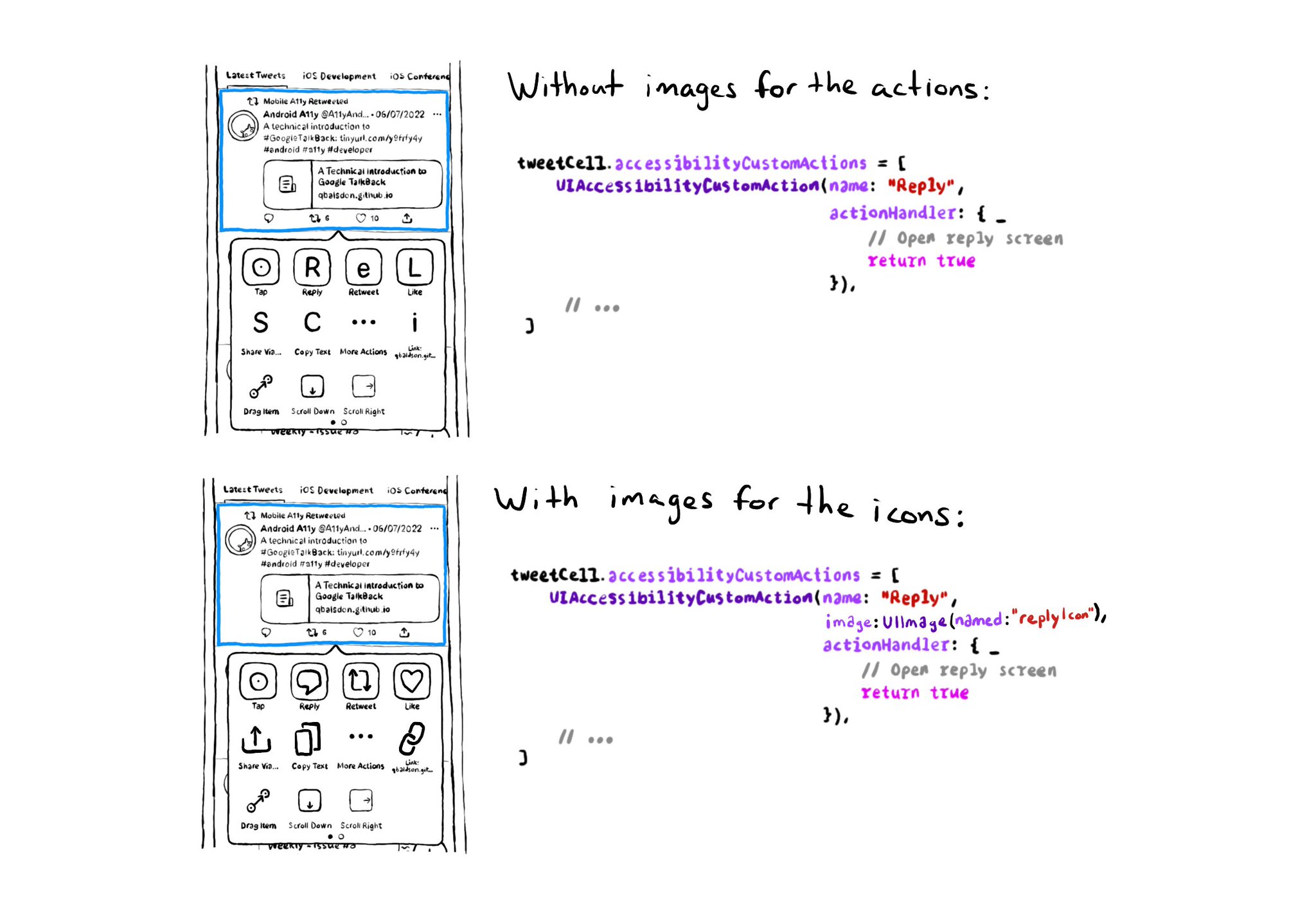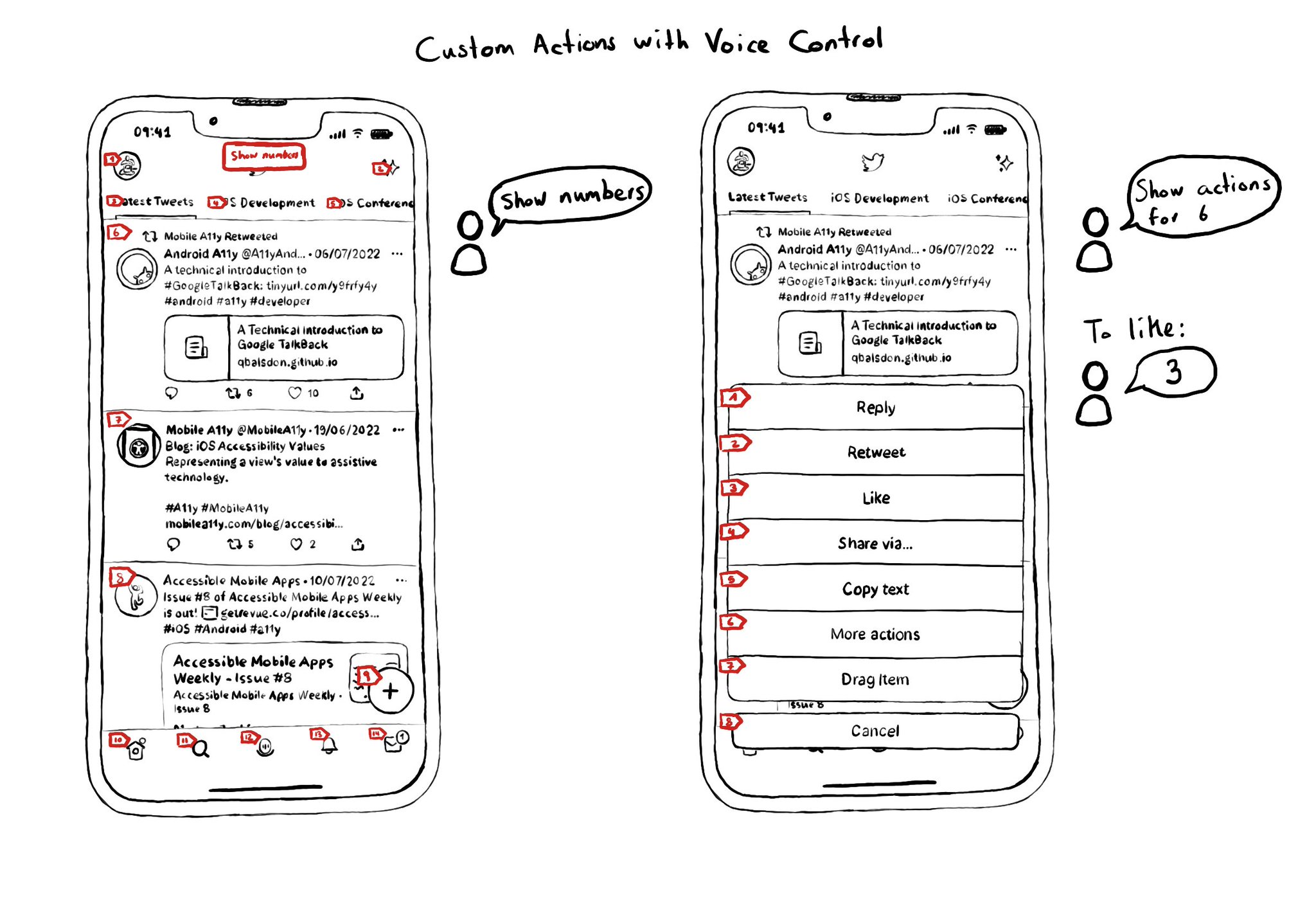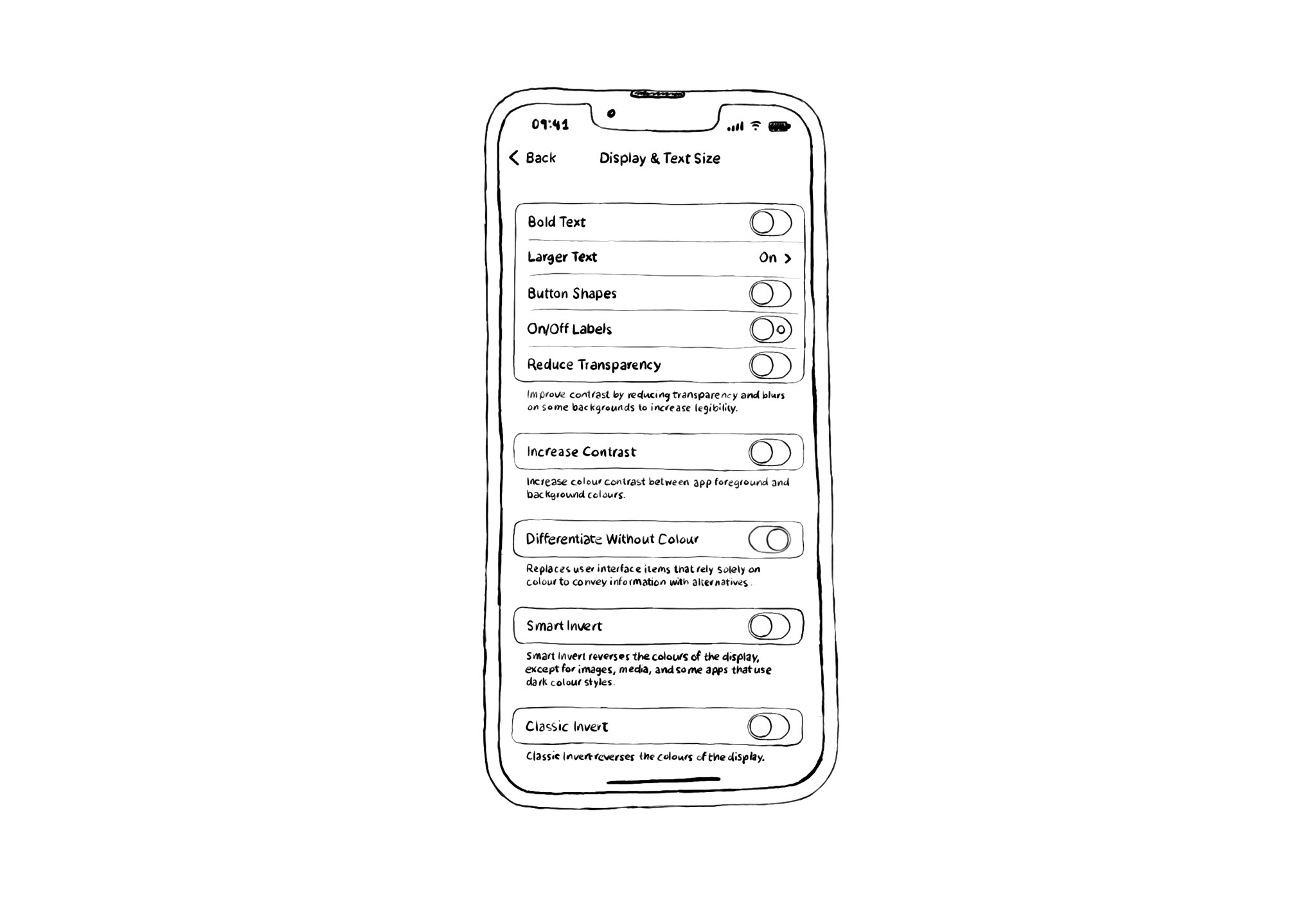Since iOS 14, UIAccessibilityCustomAction has an initialiser that accepts an image, as well as a name and action handler. Configuring one will make your custom actions easier to spot in the Switch Control menu.

You may also find interesting...

Custom actions work with VoiceOver, Switch Control and Full Keyboard Access. They also do for Voice Control. You can say "Show actions for <item name/number>", and an action sheet with all options, numbered, will be presented to the user. For some use-cases, Voice Control users might not feel it is a big win. Navigation is not as big of an issue, and interacting with custom actions might be a bit trickier than with "exposed" buttons. But lots of times seems a fair compromise.

There are a ton of customisation options in the accessibility settings in iOS. When doing things the Apple way, this options should, in most cases, just work for you. If not, you can find flags to check for all these options in UIAccessibility.

Make sure you support Dynamic Type up to the largest text size available. Take into account that there are five extra accessibility sizes available from the Accessibility Settings. It can make a huge difference for lots of users.